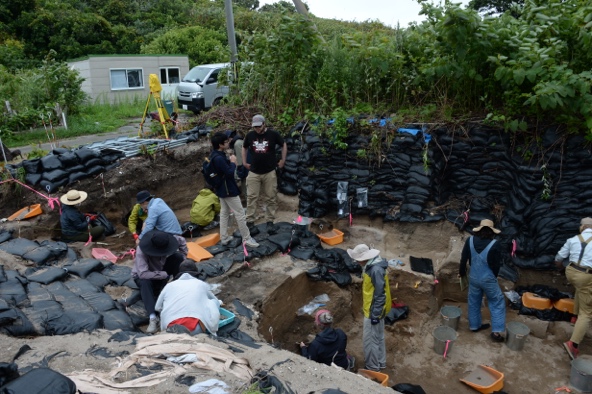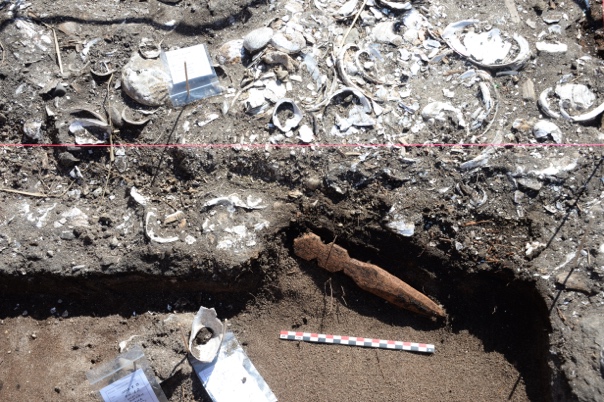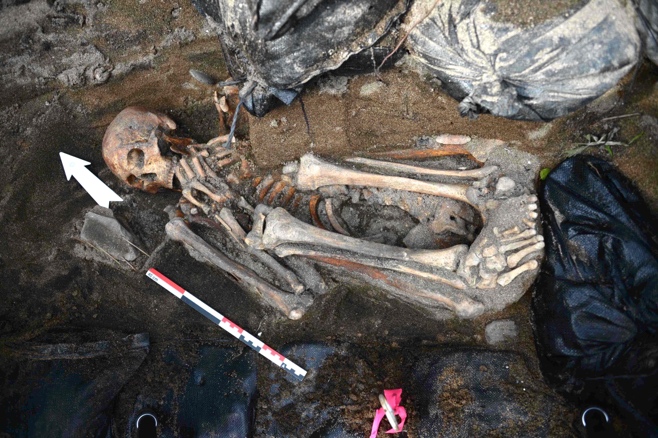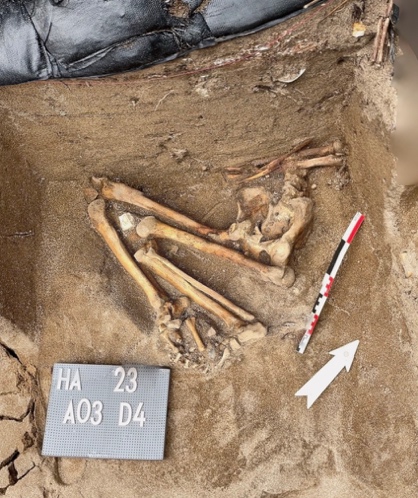〇Hirofumi KATO (Hokkaido University), Tsuyoshi WATANABE (Hokkaido University), Sachiko UCHIYAMA (Tokai University), Kenji SUZUKI (National Museum of the Ainu People), Atsuko YAMAZAKI (Nagoya University), Takehiro SATO (University of the Ryukyus), Hideto NAKAMURA (Hokkaido University)
1. Introduction
In Hokkaido Island, located in the northern part of the Japanese archipelago, it is known that prehistoric populations and their cultures were formed not only during the Late Pleistocene but also after the Holocene, under the influence of northward and southward migrations across the archipelago. On the other hand, as seen in the Jomon cultural and in the Satsumon and Okhotsk cultures, there are marked regional differences within Hokkaido Island from east to west and from north to south, as seen in pottery production techniques and settlement patterns.
Group B02 believes that in order to understand these group and cultural dynamics and their factors, it is essential to understand not only material culture but also environmental changes and human resource use with a high degree of precision. We aim to contrast these with zooarchaeological evidence of domestic animal use and paleoenvironmental changes based on environmental and earth science studies. In addition, by integrating research results from population genetics and isotope science, we hope to construct a model of the correlation between human activities and environmental changes, and to reconstruct the formation processes of populations and their cultures.
2.Activities of Group B02 in FY2023
In FY2023, we held two workshops in the group to review the prehistoric culture of Hokkaido Island as a whole and to share issues among the participating members. The group also conducted an international field school at the Hamanaka 2 site on Rebun Island, a remote island located at the northwestern end of Hokkaido Island, to investigate multilayered archaeological site from the Late Jomon stage to the Early Modern Ainu Culture, and sampled materials related to paleoenvironmental reconstruction.
Kenji Suzuki, Co-Investigator, is mainly in charge of the regional characteristics of prehistoric culture in Hokkaido, and is examining the importance of establishing a chronological division of Ainu history that includes the modern period, and in this context, he is considering the position of Paleolithic and Jomon culture as the beginning of "prehistory" in the history of the Ainu. In addition, the distribution and chronological position of “Casi” remains, which are representative of Ainu culture, are examined with regard to the differences in prehistoric culture between the East and West and regional cultural traditions in Hokkaido.
Regarding the use of animals in Hokkaido since the Jomon period, Sachiko Uchiyama, Co-Investigator, has been working on the basic data to understand the use of animals in Hokkaido based on animal remains. Specifically, she has been collecting animal remains, DNA analysis, isotope ratio analysis, and other scientific analyses related to animal use from excavation and research reports on archaeological sites in Hokkaido. As a result, she collected 135 reports in southern Hokkaido and 252 reports in central Hokkaido. In both Southern and Central Hokkaido, there are still some reports to be confirmed, and she plan to continue the collection work in FY2024. She also plans to organize the types of animals and parts of animals used based on the collected reports.
3.Field School Results and Efforts
The field school at the Hamanaka 2 Site was mainly conducted by Hirofumi Kato, the principal investigator, with Tsuyoshi Watanabe, Co-Investigator, and Atsuko Yamazaki, a research collaborator, sampling analytical data for paleoenvironmental reconstruction in the field.
At the Hamanaka 2 Site, the dune, fish bone layer, and shell layer, which are 4 m thick, have been repeatedly formed to form the site. The formation process of the cultural stratum is largely divided into two units: the upper and lower units. During the Final Jomon to the early Okhotsk Culture, hearth, stone boiling pits, and concentrations of sea mammal bones were formed in the sand layer.
On the other hand, in the upper unit from the Okhotsk Culture to the Early Modern Ainu Culture the shell midden layer is mainly composed of fish bone and abalone shell layers, indicating that the activities at the site differ greatly.

Figure 1: Hamanaka 2 ruins investigation scene

Pollen analysis of lake sediments from Lake Kushu in the northern part of Rebun Island has reported that four cold events have occurred since 5500 years ago, some of which coincide with cultural transition points. However, the reasons why environmental changes coincide with cultural transitions are not clear, and there are no high-resolution reconstructions of climatic and marine environments at the seasonal scale of human habitation.
Therefore, in the FY2023 survey, we will collect bivalve samples (Uva mussels [Pseudocardium sachalinense]), which are paleoenvironmental indicators with high temporal resolution and were collected by people living at that time, to reconstruct the climate and marine environment of the period from 3500 years ago to the present, i.e., (1) water temperature and its seasonal variation at that time, (2) nutrient concentrations that enable estimation of we aim to estimate, (3) Estimating the timing of bivalve collection. Analysis of this sample is underway at Hokkaido University and Nagoya University.
Biomarker analyses using GC-MS and LC-MS are being conducted at Hokkaido University by Hideto Nakamura, research collaborator, to evaluate the origin of soil organic matter and depositional environment for the soil samples collected on a trial basis. Although the analysis is still in progress, there is a possibility that a unique steroid composition, mainly coprostanol, a fecal steroid of human origin, as well as plant-derived biomarkers, can be confirmed.
In the field school, two new burials were identified, one of an adult male (NAT005) from the Towada Stage of the Early Okhotsk Culture, and the other of unknown sex and age (NAT006) from the Epi-Jomon Culture. NAT005 was in a crouched posture, with knees bent in a wide arc, and was accompanied by bifacial chart spear point, two stone axes, a whetstone, and a bone spear point.
NAT006, identified in Layer VII of the Epi-Jomon layer, was not fully excavated in the 2023 survey because the upper half of the body was located in the wall outside the excavation area.
The NAT005 is currently being organized by Associate Professor Daisuke Kubo of the Laboratory of Human Evolution, Graduate School of Medicine, Hokkaido University, and preparation for genome analysis of the collected samples is being conducted by research collaborator Takehiro Sato of the Laboratory of Anatomy, Graduate School of Medicine, University of the Ryukyus.
As already pointed out in previous studies, the formation process of the Okhotsk cultural group includes not only the local Jomon group, but also group interbreeding with groups from Northeast Asia (Kamchatka Peninsula region) and the lower Amur River basin. The addition of this material is expected to clarify the formation process of more specific populations.

Figure 3: Burial of the Towada period

